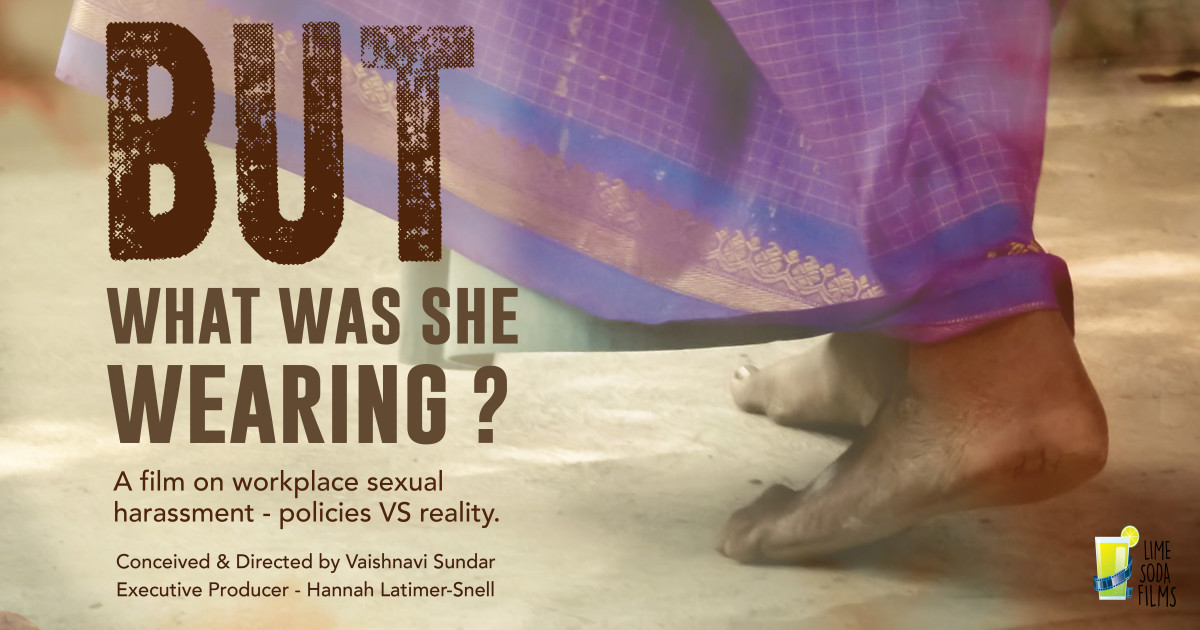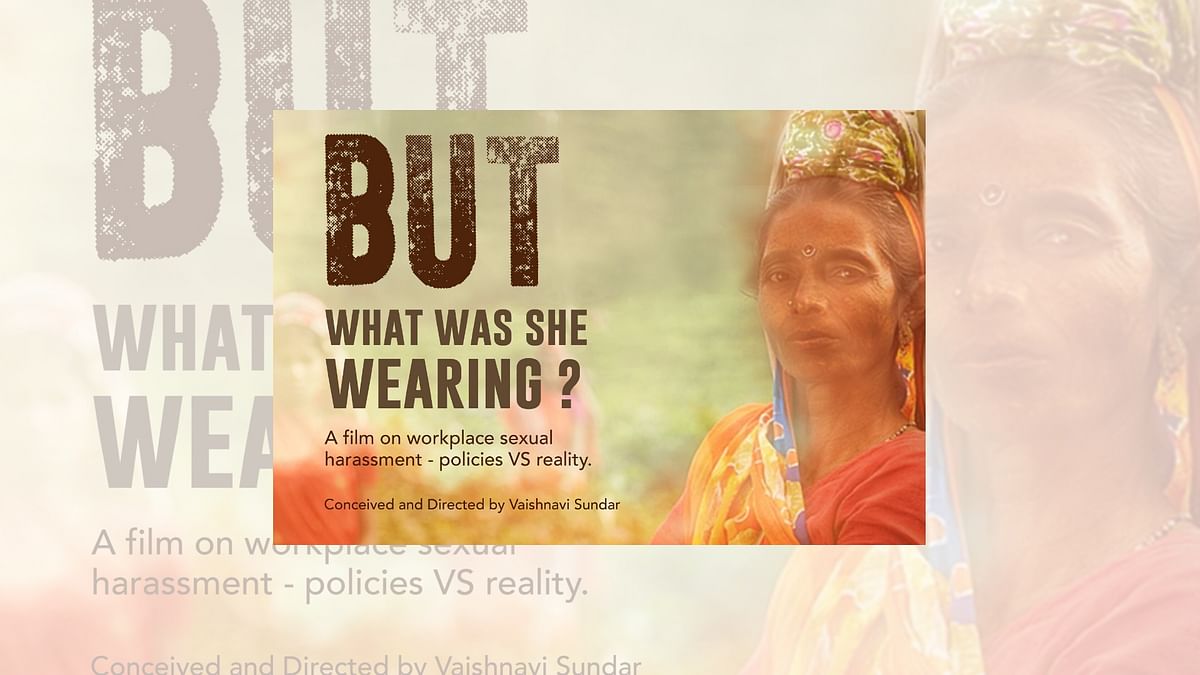But What Was She Wearing? is India’s first feature-length documentary film shot by a all women crew that is centered on the Sexual Harassment of Women at Workplace (Prevention, Prohibition, and Redressal) Act of 2013 and its deficiencies in enforcement.
In this first-of-its-kind log of stories and perspectives of over two dozen Indian women, director Vaishnavi Sundar juxtaposes the rule on paper with the ground realities and experiences of sexual abuse that women encounter from opulent corporate offices to building sites and manual scavenging, and their struggle for justice against an obstinate, patriarchal State.
It is heartbreaking, frustrating, and eye-opening. Vaishnavi Sundar’s insightful documentary on sexual abuse in India blows the lid off the sheer magnitude of sexual assault experienced by women on a daily basis. For the first time, we have an examination of not only the idea of “sexual harassment,” but also the scratching, bile-inducing truth of the various behaviours that constitute sexual harassment.
It examines the much-vaunted legislation against sexual assault in India in a straightforward, no-frills manner, examining the amount of challenges that survivors still face in ensuring a secure workplace, as well as the logistical rigour of it all.
But What Was She Wearing? opens with a quote from Manu smriti: “In childhood a female must be protected by her father, in youth by her husband, when her Lord is dead, by her sons; a woman must never be independent.” This highlights the backdrop and myths perpetuated in a patriarchal society regarding the agency of women.
Short fragments from the music video Jackal’s Womb, a well choreographed production portraying the misogynistic scriptural passages from the Manu smriti beautifully punctuate the forthright straight-from-the-shoulder narratives of the women captured against a pitch black backdrop.
The film also emphasises on a critical reality that our culture continues to ignore in favour of short-term solutions: this is not an issue that can be addressed only by legal and structural responses, social and cultural reform is more important and necessary now more than ever
The Sexual Harassment of Women at Workplace (Prevention, Prohibition, and Redressal) Act of 2013, which is based on the Vishakha guidelines of 1997, outlines the steps that employers are legally required to implement in order to facilitate healthy working environments. These include raising concerns of what constitutes sexual assault, establishing an independent employee complaints committee, and conducting sensitive and prompt investigations of complaints.
In a world where reputation and successful relationships are valued, a woman’s career advancement is often hampered by her inability to yield to relentless abuse. The stories of establishing ground rules just to see them broken by individuals in positions of confidence and authority, or others who claim their attention under the pretext of seeking assistance, show an issue of privilege and sexual demand that our work culture refuses to recognise in any significant way, rather prefer to normalise and even deem funny.
Also read: Sexism At The Workplace: An Account Of Professional Sidelining Based On Gender
The film touches upon the problems of women from every possible workplace – organised or unorganised. Vaishnavi ensures a comprehensive representation of the problems that women face due to their caste, religion, region and the type of industry, outside of a problematic workplace. The film also features men discussing the sexual harassment that they face, and addressing the problems of toxic masculinity.
After the film was screened, many organisations have set up committees and conducted awareness campaigns about initiating redressal to an aggrieved female employee at the workplace. However, the film’s meaning lies not just in the tales of violence that it illuminates, but also in its piercing glance at our societal shackling of boys and men into the mentality that creates serial harassers or abusers.
But What Was She Wearing? is a well-researched 110 minutes documentary that deconstructs the Sexual Harassment of Women at Workplace Act of 2013, contrasting the toothlessness of this legislation on paper, with the facts and obstacles that women in India face in their quest for justice
The film also emphasises on a critical reality that our culture continues to ignore in favour of short-term solutions: this is not an issue that can be addressed only by legal and structural responses, social and cultural reform is more important and necessary now more than ever.
Further, the film exposes the coercive methods perpetrators use in their search for vengeance and delegitimisation of their accusers, whilst also setting in motion events that will later limit their existence in other ways—through professional, legal, and systemic coercion.

The film investigates how a male-driven concept of sexual dominance is developed, preserved, and perpetuated by male actors who carry out predatory narratives in television, film, and humour. Spanning 32 interviews with celebrities, television stars, authors and activists, the scale of privilege that men have in our culture is thoroughly explored. While in some circumstances, the internal appeals committee’s operations are is flawed, in others, the issue stems from how employers and coworkers view sexual abuse in the first place.
But What Was She Wearing? is a well-researched 110 minutes documentary that deconstructs the Sexual Harassment of Women at Workplace Act of 2013, contrasting the toothlessness of this legislation on paper, with the facts and obstacles that women in India face in their quest for justice.
Also read: ‘Dear Sirs’: The Exhausting Ordeal Of Pushing Through Workplace Sexism
Naina Bhargava( she/they) is a philosophy graduate from Miranda House, University of Delhi. She is the Founder and Editor at The Philosophy Project. You may find her on Instagram.
Featured Image Source: The Quint




